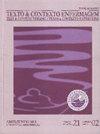CLINICAL ETHNOGRAPHIC NARRATIVE INTERVIEW ABOUT THE EXPERIENCE OF WOMEN DISCHARGED FROM THE PRISON SYSTEM
Q2 Nursing
引用次数: 0
Abstract
ABSTRACT Objectives to analyze the perception of women discharged from the prison system about the main stressors that marked their life trajectories and to discuss the feasibility of the Clinical Ethnographic Narrative Interview technique to facilitate the narrative of this group. Method narrative research developed in a social protection center in the interior of São Paulo. Data were collected in 2021 (January and February) using the Clinical Ethnographic Narrative Interview technique, which intersperses narratives and visual aids. The synergy between the concepts of vulnerability and stress was adopted as a theoretical framework, and content analysis was performed. The discussion of viability was based on the criteria of acceptability and expansion. Results The narratives addressed psychosocial difficulties prior to incarceration and the hostile environment of the overcrowded prison as a place of conflict and abuse of power. Family helplessness, estrangement from children, negative emotions, somatic symptoms and traumas were mentioned as consequences of seclusion. The participants also reported coping processes with words that referred to the ideas of overcoming, hope, new beginning and gratitude. It is understood that this high point of the narratives may reflect the potential of the interview technique and corroborates its adequacy. Conclusion The undoubted painful character of the narratives about the different adversities experienced, especially as a result of seclusion, was also permeated by aspects that denoted resilient processes. The adoption of this interview technique made data collection more sensitive, welcoming and timely to expand the repertoire of words in the expression of feelings and revisit painful experiences, envisioning positive possibilities for the future.关于从监狱系统中释放的妇女的经历的临床民族志叙述访谈
【摘要】目的分析出狱女性对影响她们生活轨迹的主要压力源的感知,并探讨临床民族志叙事访谈技术的可行性,以促进这一群体的叙事。方法叙事研究在圣保罗市内部的一个社会保护中心展开。数据于2021年(1月和2月)使用临床民族志叙事访谈技术收集,该技术穿插叙述和视觉辅助工具。采用脆弱性和应力概念之间的协同作用作为理论框架,并进行内容分析。可行性的讨论是基于可接受性和扩张性的标准。结果这些叙述叙述了入狱前的心理社会困难,以及过度拥挤的监狱作为冲突和滥用权力场所的敌对环境。家庭无助、与儿童疏远、消极情绪、躯体症状和创伤被认为是隔离的后果。参与者还报告了与克服、希望、新开始和感激等概念有关的词汇的应对过程。可以理解的是,叙述的这一高潮可能反映了采访技术的潜力,并证实了它的充分性。毫无疑问,这些关于不同逆境经历的叙述,尤其是由于隐居所带来的痛苦,也渗透着代表弹性过程的方面。这种访谈技术的采用使数据收集更加敏感、欢迎和及时,扩大了情感表达的词汇库,重温了痛苦的经历,展望了未来的积极可能性。
本文章由计算机程序翻译,如有差异,请以英文原文为准。
求助全文
约1分钟内获得全文
求助全文
来源期刊

Texto Contexto Enfermagem
Nursing-General Nursing
CiteScore
1.80
自引率
0.00%
发文量
85
审稿时长
>12 weeks
期刊介绍:
Texto & Contexto Enfermagem provides space for reflection and deepening of knowledge about issues of practice, teaching and research in health and nursing, at national and international levels.
The journal is published quarterly in the rolling pass or Continuous flow mode, accepting manuscripts in Portuguese, English or Spanish, in the categories original article, reflection, experience report and review. Contributions designated to the dissemination of unpublished original research results are prioritized for publication. Special issues are published at the discretion of the Board of Directors and Associate Editors. All manuscripts are published in two versions, one of which is English, aiming to cover the largest number of readers worldwide.
The editorial policy of Texto & Contexto Enfermagem is based on rigorous quality criteria for indexing and publishing (including technical and normative aspects, graphic and textual quality and excellence in scientific content); on responsibility for shared management between the Board of Directors, Editorial Board and Internal and External Editors Associates; and on the rigorous and constructive peer review, preserving the anonymity of authors and reviewers (double blinded).
 求助内容:
求助内容: 应助结果提醒方式:
应助结果提醒方式:


